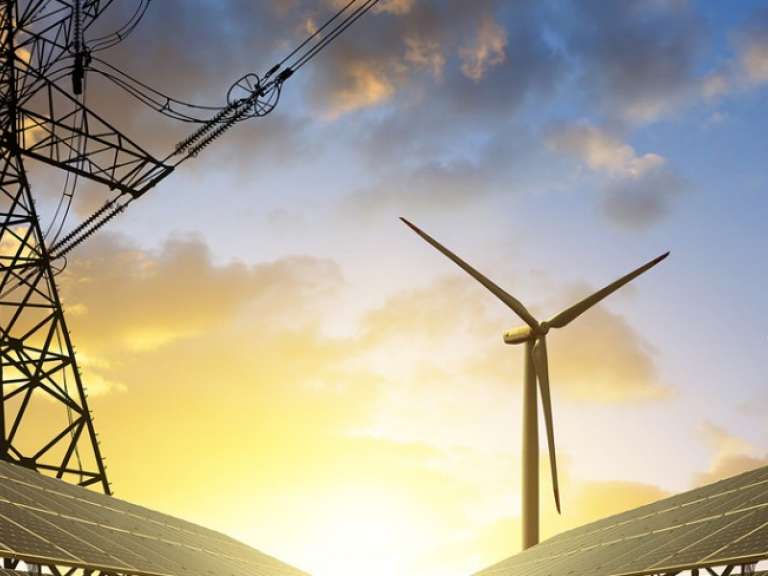Solar and Wind Power Generation: The Challenge for Grid Operators and Generators
Peter Kelly-DetwilerWind power generation and solar can be integrated into the grid with optimal power generating models and flexible conventional generation.

Renewables, especially solar and wind power generation, are becoming increasingly cost-effective, and in some areas of the United States, they represent a significant portion of generating capacity.
The expansion of renewables has been breathtaking. Installed wind capacity has catapulted from just under 40,300 megawatts (MW) of installed capacity in 2010 to 75,700 towards the end of 2016. In some areas, on the windiest days, wind power can represent a significant portion of the entire generating portfolio. For example, the American Wind Energy Association noted that Texas has seen hours where wind power in the grid has exceeded 45 percent, and in Excel Energy (Colorado), wind has exceeded 66 percent.
While these are encouraging statistics in the race to provide cheap electrons and decarbonize our grid, they also pose challenges for power planners. As wind power generation is a function of the cube of the wind speed, even small variations in wind mean significant changes in turbine output. Variable wind (and solar) resources pose challenges to the grid that must be addressed, especially with more renewable resources coming in future years.
Fortunately, there are tools that can be employed, including improved and expanded transmission infrastructure, more granular near–term forecasting, and grid-scale modeling tools. Numerous grid operators (ISOs or RTOs) have recently conducted modeling efforts to determine just how much renewable capacity can be integrated into the grid and what other resources are necessary to facilitate that process of integration.
The results of these inquiries are significant, and there are many commonalities. One interesting finding is that even with a very large amount of renewables, a relatively small amount of reserves—about one percent—is required (partly because of the geographic diversity of renewables).
It's also because most power grids have generating fleets whose operating modes can be altered to accommodate more renewables. For example, gas-fired units can ramp up and down more frequently as required. However, in order to effectively deploy these resources, improved day-ahead and short-term forecasts are helpful.
Increased variability from more solar and wind power generation means that conventional generating resources must perform differently. They must increasingly provide necessary capabilities, such as frequency reserve and ancillary services (spinning reserves), which ensure grid stability while ramping up and down in response to variations in the renewable resources.
The grid-planning models can help to indicate the level of flexible conventional generation that is required to balance various levels of renewables. And although coal plants have some ability to ramp, the majority of this responsibility falls on the shoulders of the gas-fired fleet.
The question then becomes not whether the generators are capable, but whether the ISOs are according the right value to those services. In other words, gas-fired generation can ramp up and down—incurring wear and tear—but it needs to be compensated for the new role it is playing.
This new potential revenue stream is critical for operators who have suffered very low margins in recent years with the advent of low-priced gas and inexpensive renewables. The good news here is that Texas (starting in 2018) and California power grids (with the highest levels of renewables) are putting a value on those services, and other grids may follow.
The other good news is that while there is additional wear on power plants that ramp up and down more frequently, there are considerable overall system benefits. One study of the mid-Atlantic Power Pool (PJM), assuming 30 percent penetration of renewables, pointed to an additional increase in Variable Operation and Maintenance (VOM) costs, since, "the renewable generation increased the amount of cycling (start up, shut down, and ramping) on the existing fleet of generators." However, the study also found that these costs "were small relative to the value of the fuel displacement." The challenge here is to ensure that some of these savings are channeled—potentially in the form of new contracts—to power plant owners to pay for upgrades and repairs, and for the overall value they bring to the system.
One key to increasing value while decreasing costs is to ensure that accurate renewable forecasts are available to grid planners. This enhances the proper amount of capacity commitments to the Day-Ahead market. Additional forecasting closer to real time will further improve the ability to manage intermittency and reduce costs.
Studies also show that grid operators must periodically reassess the system generation capabilities to truly understand the composition of the system and its disparate assets, especially when the grid is changing so rapidly. They also need to reevaluate their assumptions. For example, certain plants (and not just gas—even coal plants can ramp) may be willing to change their operating patterns and increase flexibility if adequately paid for performance.
One other recently learned lesson is that existing assets can be retooled for this new world. In Hawaii, for example, increased levels of wind and solar were stressing the grid. With additional investment in the existing fossil fleet, Hawaii Electric was able to increase the ramping capability in its Oahu fleet five-fold.
Clearly, the nature of the grid is changing, with a need to accommodate more variables in the power generation model. However, studies have shown that the existing generation fleet, armed with the right technologies, forecasts, and incentives, is capable of integrating a lot more renewable energy than most previously thought possible.
Smart appliances, electric vehicles, and the smart grid will all play a vital role in consumer energy demand management.
The future of gas generation will by shaped by its relationship to renewables, regulations to keep costs down, and new drilling technologies.
The power plant technology upgrade should start with a healthy infusion of data and analytics, just as the baseball industry has seen in recent years.